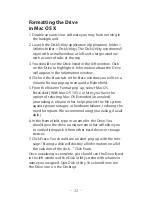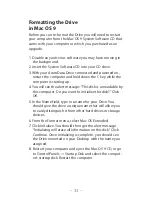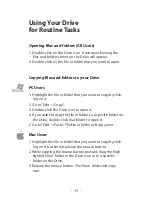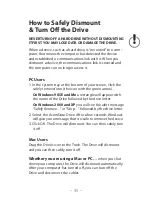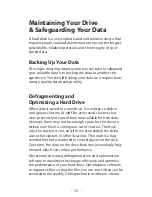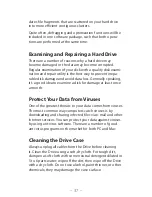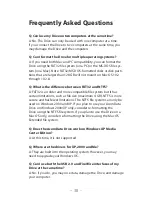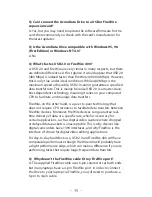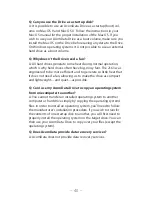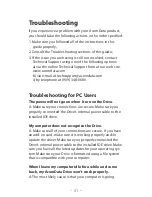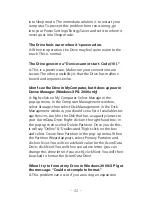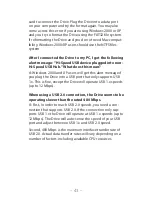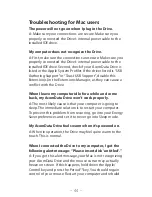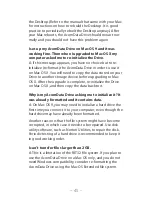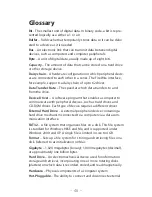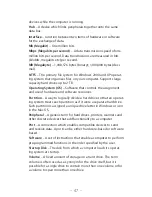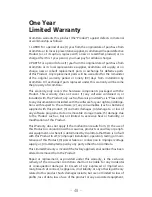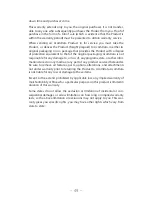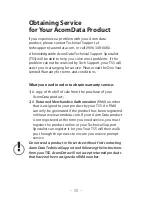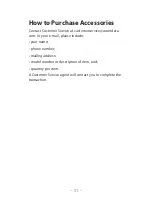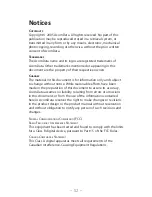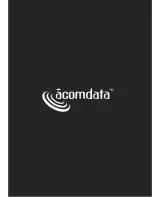
– 46 –
Glossary
Bit
- The smallest unit of digital data. In binary code, a bit is repre-
sented logically as a either a 1 or a 0.
Buffer
– RAM cache that temporarily stores data so it can be deliv-
ered to a device as it is needed.
Bus
– An electronic link that can transmit data between digital
devices, such as computers and computer peripherals.
Byte
– A unit of digital data, usually made up of eight bits.
Capacity
– The amount of data that can be stored on a hard drive
or other storage device.
Daisy chain
– A hardware configuration in which peripheral devic-
es are connected to each other in a series. The FireWire interface,
for example, supports a daisy chain of up to 62 drives.
Data Transfer Rate
– The speed at which data transfers to and
from the drive.
Device Driver
– A software program that enables a computer to
communicate with peripheral devices, such as hard drives and
CD-ROM drives. Each type of device requires a different driver.
External Hard Drive
– A external peripheral device containing a
hard drive mechanism connected to a computer via a data com-
munication interface.
FAT32
– A file system that organizes files on a disk. This file system
is standard for Windows 98SE and Me, and is supported under
Windows 2000 and XP. A single file is limited in size to 4 GB.
Format
– Sets up a file system for storing and retrieving files on a
disk. Referred to as initialization on Mac.
Gigabyte
– 1,024 megabytes (binary); 1,000 megabytes (decimal),
or approximately one billion bytes.
Hard Drive
– An electromechanical device used for information
storage and retrieval, incorporating one or more rotating disks
(platters) on which data is recorded, stored, and read magnetically.
Hardware
– Physical components of a computer system.
Hot-Pluggable
– The ability to connect and disconnect external
Summary of Contents for Enclosure
Page 1: ...Hard Drive For 3 5 IDE hard drives ...
Page 53: ......

